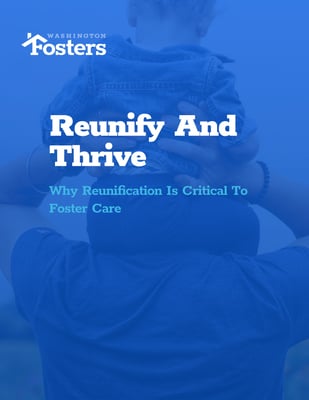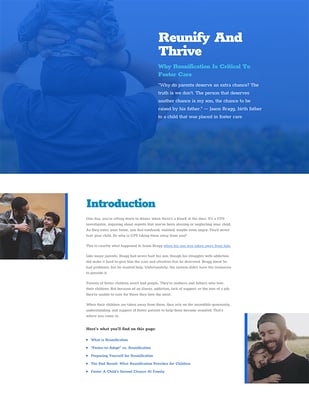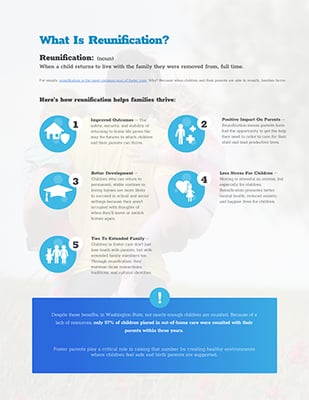“Children in foster care are some of the most vulnerable people in our society. They experience the same coronavirus anxiety and fear as everyone else, but for them, it’s coupled with being separated from their families.” — “Coronavirus adds to suffering of foster children in King County,” The Seattle Times
For most families in Washington State, the coronavirus outbreak has resulted in a lot more time together. Parents off of work and children out of school are staying home 24 hours a day, 7 days a week.
The opposite, however, is true for children in foster care, who have lost their limited visits with parents due to social distancing rules.
Losing the ability to visit isn’t just an inconvenience, it’s a tragic loss for families attempting to reunify, for youth dealing with past trauma, and for children who simply don’t understand why they can’t see their parents anymore.
 Why Visitation Is Important
Why Visitation Is Important
In Washington State, and across the country, reunification is the goal in the majority of foster care cases. When children can return home to live with their parents, the long-term benefits significantly improved permanency and development outcomes.
Visitation is a crucial part of the reunification process. Through coordinated visits, parents and children maintain a connection that helps both of them through the foster care process. When those visits are removed, children experience trauma, parents lose hope, and families are less likely to have the resources they need to reunite.
 Why Visits Are Restricted In Washington State
Why Visits Are Restricted In Washington State
On March 23, Governor Inslee announced a sweeping stay-at-home order that closed non-essential business and prohibited non-essential travel in Washington State. While in-person visits aren’t technically illegal, they do require supervision from caseworkers or an order from the courts, which presents another layer of challenges.
It’s not easy for foster parents, caseworkers, and parents to find a solution for in-person visits that are safe for everyone involved. So, in the vast majority of cases, visits have switched to video chats and phone calls.
“No one would disagree that in-person visits for parents and children are best done in person. Changing to tele visits has been such a drastic change in practice, agencies are experiencing many challenges in setting up this new way to provide visitation support.” — Jill May, Executive Director at Washington Association for Children & Families.
But protecting the health and safety of families and agency staff is also critical. “Some agencies are losing staff and losing income due to the reduction in referrals, and staff are reluctant to do visits for fear of contracting the virus,” she says.
These are difficult times for everyone, especially foster children, but there are ways foster parents can help.
 What Foster Parents Can Do To Help
What Foster Parents Can Do To Help
Foster parents should consider finding creative ways of providing in-person visits that still comply with social distancing recommendations. “One agency went to a home and stayed on the sidewalk outside to have face-to-face visits with the family,” says May.
While this may not work as well for younger children who can’t understand the need for physical separation, it is a start for older children and youth. For younger children, the key may simply be an abundance of video chats to ensure parents and children feel as connected as they possibly can.
Some foster parents may wonder, “Why should I try so hard to keep a child connected to parents who couldn’t take care of them?”
The answer is empathy. The majority of children in foster care are there due to neglect, not abuse. Many parents are dealing with addiction or have struggled with poverty and systemic racism their entire lives.
Foster parents need to understand birth parents aren’t necessarily bad people, and the fact their child is in foster care does not mean that they love that child any less. By making an extra effort to make visits happen in hard times, foster parents support reunification and support a second chance for families.
Learn how you can become a foster parent who supports reunification. Read our free guide on reunification today.








